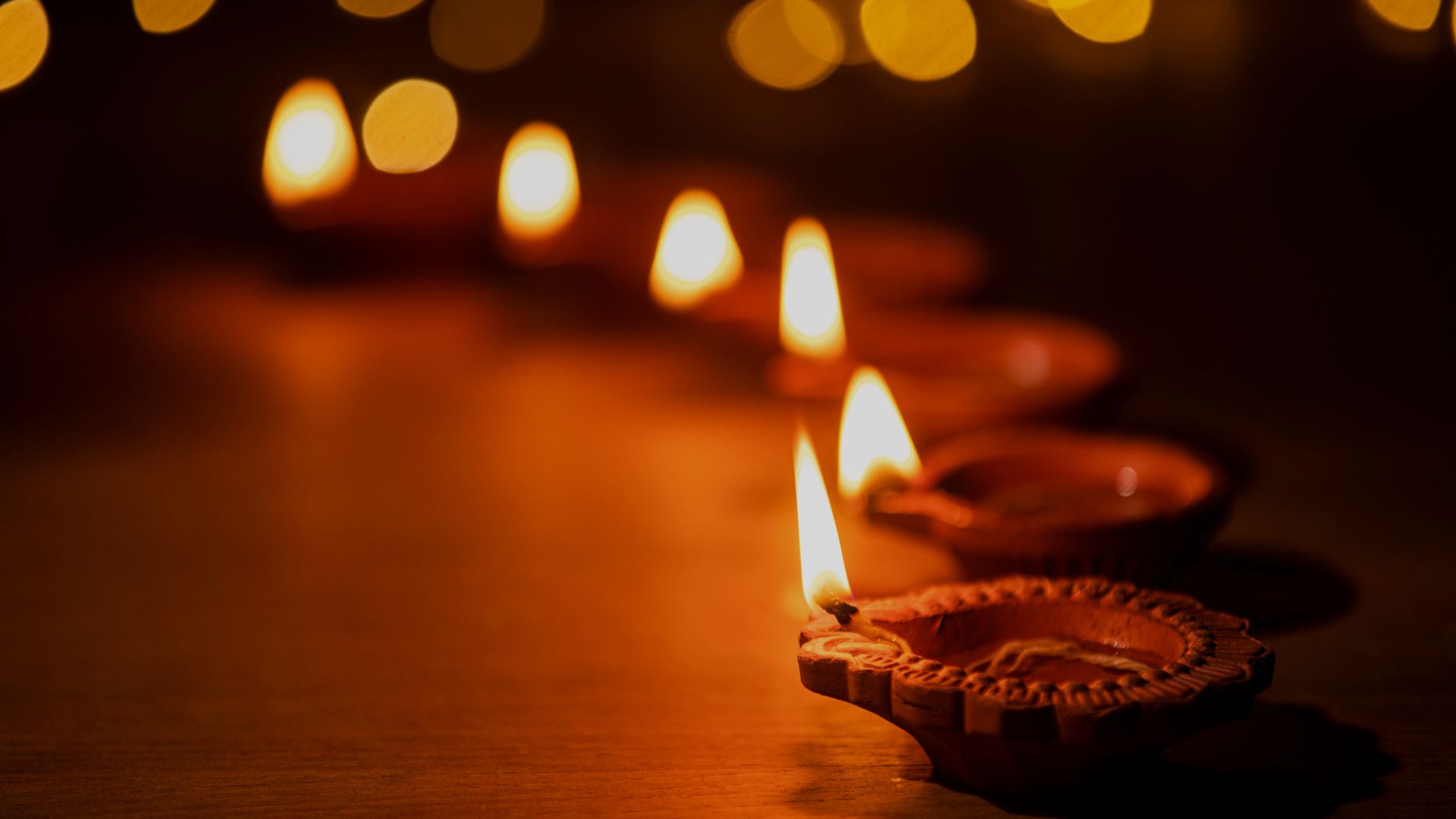Beginning on Wednesday, October 30th, more than a billion people will celebrate one of the largest and most significant religious observances in the world, Diwali.
Diwali is a five-day festival that originated on the Indian subcontinent and celebrates the “victory of light over darkness, good over evil, and knowledge over ignorance.” It is said that the term “Diwali” is an abridgement of the Sanskrit term “dīpāvalī” which means “lamps” (dīpa) “in a row” (āvalī).
The date of Diwali changes by a week to 10 days every calendar year, because the festival is scheduled according to the lunar calendar. Diwali celebrates the new moon of the first lunar month, Kartik. It is observed on the 15th day of Kartik, the holiest month in the Hindu lunar calendar. The celebration tends to fall in October or November.
The Diwali festival is likely a fusion of harvest festivals in ancient India and is mentioned in early Sanskrit texts. Although one of the most popular festivals of Hinduism, it has transcended religious lines and is also celebrated by Jains and Sikhs and Newar Buddhists.
The common belief is that on a night of no moon, the light from a flame will ward away evil spirits, cleanse the atmosphere, and remove inauspiciousness. It has formed the ancient core of the festival.
While the holiday is associated with several Hindu deities, it is most associated with the classic story of the Rāmāyaṇa, where the lamps were placed in a row along the streets of the ancient city of Ayodhyā in celebration of the triumphant return of the God Rāma to the city after 14 years in exile.
“Rāma’s return represented a triumph of good over evil since he returned after having defeated the demon Rāvaṇa, who had kidnapped his wife Sītā. Rāma returned to Ayodya with Sītā after rescuing her following a great battle.”
In the lead-up to Diwali, celebrants prepare by cleaning, renovating, and decorating their homes and workplaces with diyas (oil lamps) and rangolis (colorful art circle patterns).[ During Diwali, people wear their finest clothes, illuminate the interior and exterior of their homes with diyas and rangoli, perform worship ceremonies to Lakshmi, the goddess of prosperity and wealth, light fireworks, and partake in family feasts, where mithai (sweets) and gifts are shared.
The main event of Diwali happens on the third day, November 1st this year, in most places in India.
Some Hindus recognize it as the day represented in the classic Hindu epic, Ramayana, when the protagonists, Rama and Sita, arrive in Ayodhya after 14 years of exile; Diwali is often celebrated as the day of their return. In the south of India, many Hindus mark Diwali as the day Krishna defeated the demon Narakasura freeing the thousands of girls in his captivity.
However, in South India, the festival, called Deepavali, is observed as the occasion of Lord Krishna defeating the demon king Narakasura. On this day, people take a bath early in the morning when the first rays of the sun appear, and there are still stars in the sky. Goddess Lakshmi, the goddess of good fortune and prosperity, is the primary deity worshiped during Diwali.
Each day has a special significance as follows:
The first day (November 10, 2023) is known as Dhanteras. “Dhan” means wealth and “teras” refers to the 13th day of a lunar fortnight on the Hindu calendar. Lord Dhanvantari, the Hindu god of medicine and an incarnation of Lord Vishnu, is said to have brought Ayurveda and the nectar of immortality to mankind on this day.
Legend also has it that Goddess Lakshmi was born from the churning of the ocean on this day, and she is welcomed with a special puja (ritual). Gold and other metals (including kitchen utensils) are traditionally purchased. People also gather to play cards and gamble, as it’s thought to be auspicious and will bring wealth throughout the year.
The second day (October 31, 2024) is usually known as Naraka Chaturdashi. “Naraka” means hell and “Chaturdashi” means 14th day of a lunar fortnight on the Hindu calendar. Goddess Kali and Lord Krishna are believed to have destroyed the demon Narakasura on this day. Demon effigies are burned in Goa to mark the occasion.
The third day (November 1, 2024) is the new moon day known as Amavasya. It’s the darkest day of the month and is the most significant day of the Diwali festival nearly everywhere in India. Lakshmi is worshiped on this day, with a special puja performed in the evening after sunset.
The fourth day (November 2, 2024) has various meanings across India. In North India, Govardhan Puja is celebrated as the day when Lord Krishna defeated Indra, the god of thunder and rain. In Maharashtra, Karnataka and Tamil Nadu, the victory of Lord Vishnu over demon king Bali is celebrated as Bali Pratipada or Bali Padyami. In Gujarat, the start of a new year is celebrated on this day as well.
The fifth day (November 3, 2024) is known as Bhai Duj. It is dedicated to celebrating sisters, in a similar way that Raksha Bandhan is dedicated to brothers. Brothers and sisters get together and share food, to honor the bond between them.
In the weeks before the Thanksgiving holiday, we might all indulge in a bit of Diwali… clean, renovate and decorate your home, connect with family, bring light to the world, and help goodness triumph over evil.

